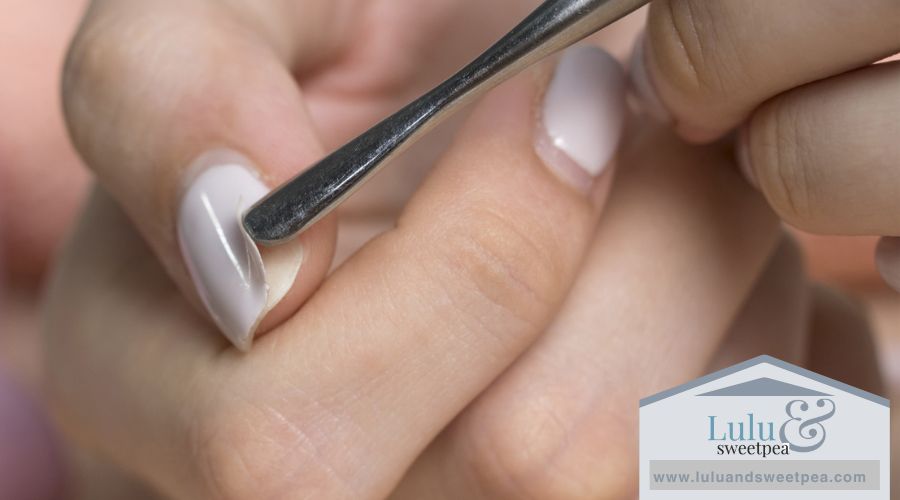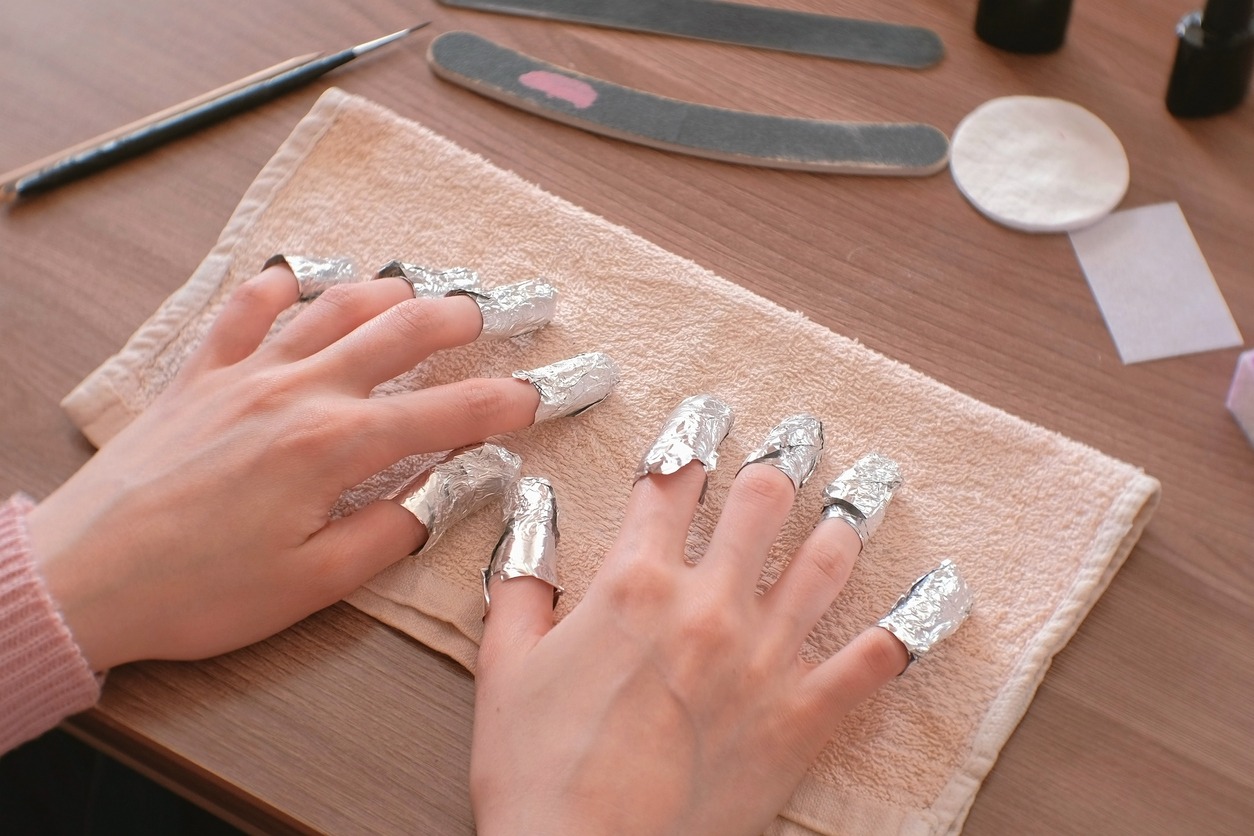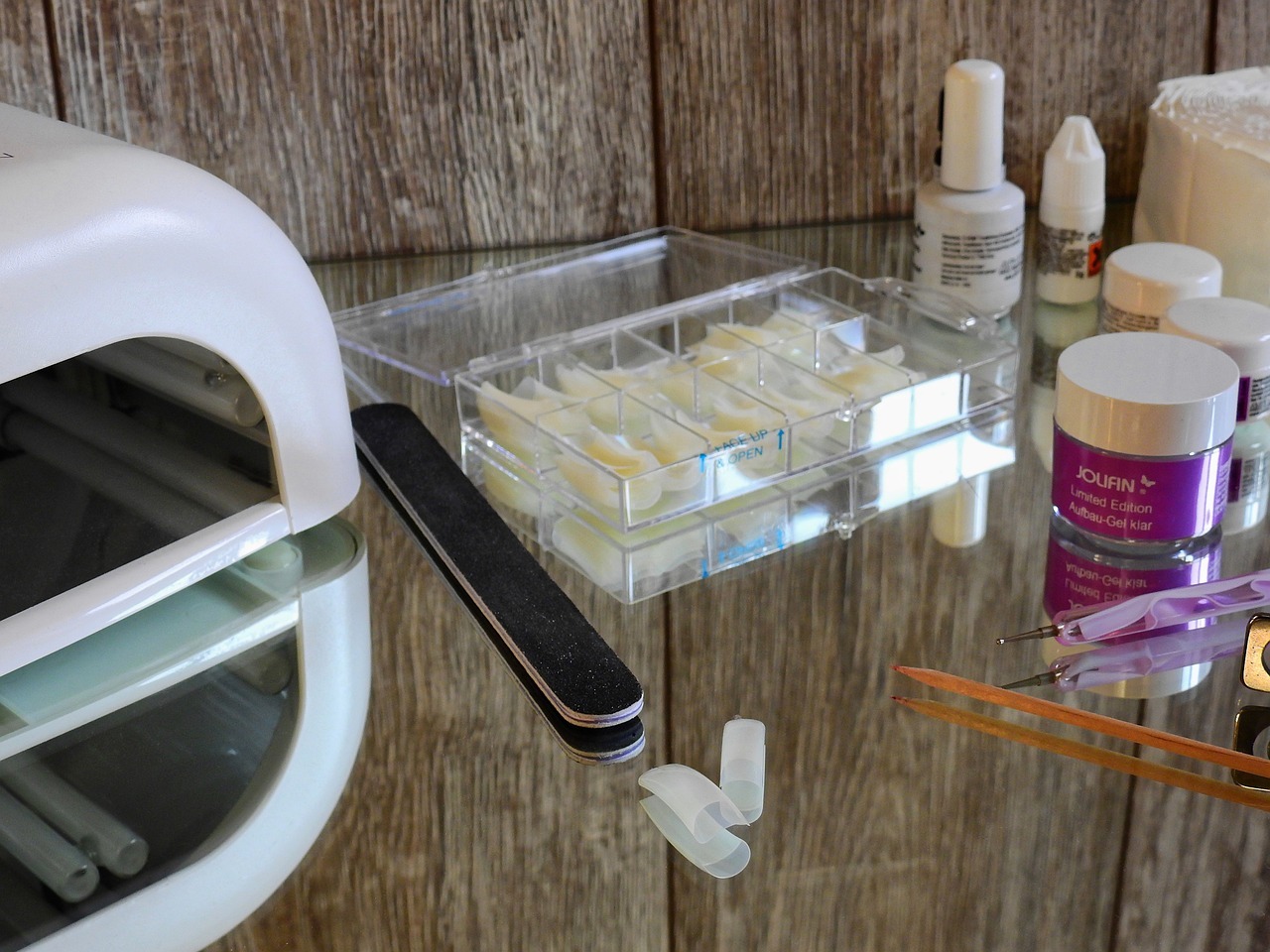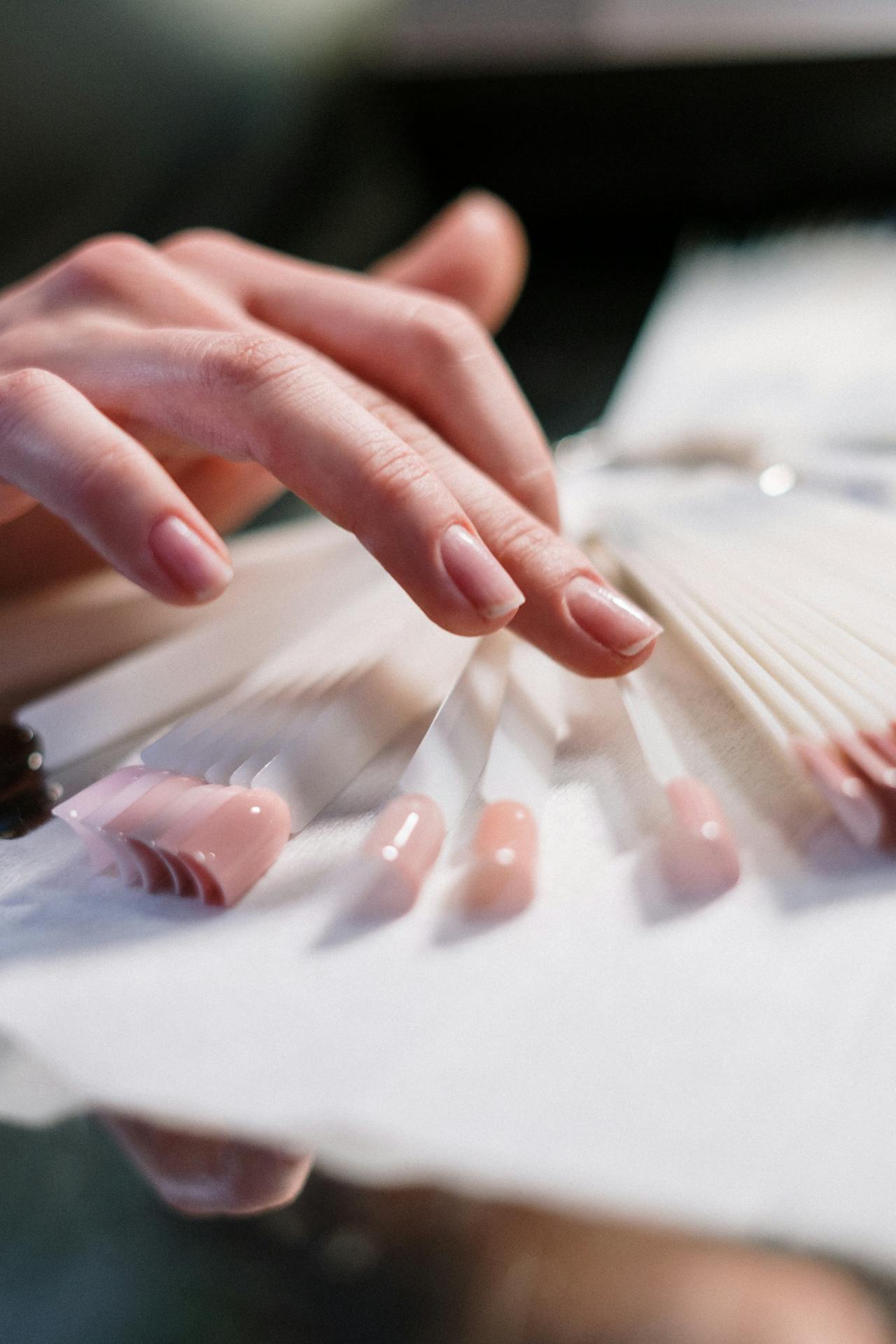Peeling off gel nail polish may seem like a quick and convenient solution for removing a manicure, however, experts in the beauty industry strongly advise against this practice. When gel polish is peeled away from the nail, it can take with it the superficial layers of the nail plate, potentially causing damage that weakens and thins the nails over time.
To maintain the health and integrity of the nails, there are proper removal techniques that should be followed. These techniques typically involve soaking nails in acetone, which breaks down the gel formula, making it easier to gently remove without causing harm to the natural nail underneath. This process can be done at home or, ideally, with the assistance of a professional in a nail salon to ensure that nails are kept strong and free from damage.
Understanding Gel Nail Polish
Gel nail polish has revolutionized the beauty industry with its long-lasting wear and glossy finish. This section delves into the unique makeup of gel polish and the standard process of gel manicures.
Composition of Gel Polish
Gel polish is composed of a complex blend of polymers and monomers that work together to create a hard, durable finish when cured. Unlike regular nail polish that dries by evaporation, gel polish requires curing under UV or LED light to form a solid, chip-resistant layer. This light triggers a chemical reaction called photopolymerization, which hardens the polish. The robust formulation not only contributes to the longevity of the manicure but also provides a shiny, nail art-ready surface.
Gel Manicure Process
The process of applying gel polish during a manicure is meticulous and typically conducted in a salon. It involves the following steps:
- Preparation: Nails are cleaned, buffed and shaped.
- Base Coat: A thin base coat is applied to the nail to enhance adhesion.
- Curing: The base coat is cured under a UV or LED light for a specific time.
- Gel Polish: Multiple coats of the gel polish are applied with curing time after each layer.
- Top Coat: A final topcoat is applied and cured, providing the signature glossy finish.
These steps ensure that the gel polish adheres correctly and lasts for weeks without chipping or fading, a distinct advantage over traditional nail polishes. The meticulous nature of a gel manicure requires a certain level of skill, typically provided by trained and experienced salon technicians.
Risks of Peeling Off Gel Polish
Peeling off gel nail polish can lead to several detrimental effects, not only compromising the aesthetic appeal of one’s nails but also potentially harming their health.
Nail Damage and Health Concerns
When an individual peels off gel polish, they typically remove the top layer of their natural nails unconsciously. This action can weaken the nail’s structure, leading to nail damage such as splitting, brittleness, and thinning over time. Brittney Boyce, a nail care expert, warns against this practice due to its damaging long-term effects on natural nails.
Furthermore, inadvertent damage to the nail beds may elevate the risk of infections, as pathogens can enter through the small tears or openings created in the process. Dermatologists, including those affiliated with the American Academy of Dermatology, emphasize the importance of maintaining nail integrity to prevent such health issues. One must also be aware of the rare, yet possible, increased risk of skin cancer from the UV lamps frequently used to cure gel polish, thus care should be taken to protect skin during the application process to minimize additional exposure during removal.
Impact on Nail Bed and Cuticles
Peeling gel polish often leads to unintended consequences on the nail beds and cuticles. Not only can it strip away layers of the nail bed, leaving nails weaker, but it can also damage the cuticles. The cuticles serve as a protective barrier for the nails, and when compromised, it exposes the nails to potential infections and may affect future nail growth.
The use of cuticle oil is often recommended by professionals to maintain the hydration of the nail bed and cuticles, mitigating some of the adverse effects of gel polish. Regularly applying a nourishing cuticle oil can aid in the recovery of the natural nail’s health after the stress of peeling off gel polish.
Proper Removal Techniques
Removing gel nail polish requires specific steps to avoid damaging the nails. It’s crucial to use the right materials and follow the proper technique to maintain nail health.
Salon-Grade Removal at Home
One can perform a salon-grade removal of gel nail polish at home by gathering the right tools and materials. The essential items include 100% pure acetone, cotton balls or pads, aluminum foil, and a nail file. A cuticle stick may also be helpful for gently pushing off the polish after the acetone treatment.
Steps for Safe Gel Polish Removal
To safely remove gel nail polish, one should follow a structured procedure:
- Buff the Nail Surface: Use the nail file to gently buff the shiny top coat off your gels, which allows the acetone to penetrate more effectively.
- Prepare the Acetone: Soak cotton balls in 100% pure acetone. It’s important to use pure acetone rather than regular acetone nail polish remover, as it’s more effective at breaking down the gel polish.
- Wrap the Nails: Place the acetone-soaked cotton balls on each nail. Secure them by wrapping each finger with a piece of aluminum foil. Ensure the foil is tight enough to hold the cotton ball in place but not so tight as to impede blood flow.
- Wait Patiently: Allow the acetone to soak for about 10 minutes. Resist the urge to peek; the polish needs time to break down.
- Remove the Foil: After the waiting period, gently unwrap the foil from each finger. If done correctly, the gel polish should appear lifted and bubbled up, indicating it’s ready for removal.
- Gently Scrape Away Polish: Use a cuticle stick to lightly push off the polish. If there is resistance, rewrap the nail for a few more minutes with acetone.
By following these steps, one can remove gel nail polish effectively without resorting to peeling, which can strip away layers of the natural nail and lead to damage.
Aftercare and Recovery
After peeling off gel nail polish, it is essential to focus on nourishing the nails and preventing future damage. The process can be taxing on the nails, so proper aftercare will aid in recovery and strengthen the nail beds.
Nourishing After Removal
Once gel nail polish is removed, the nails may be fragile and prone to breakage. Nail Strengtheners play a critical role at this stage; they are specially formulated with keratin and vitamins to reinforce the nail structure. Applying a nail strengthener can provide a fortifying treatment to compromised nails.
Incorporating cuticle oil is recommended to hydrate and promote healthy nail growth. Daily use can prevent cuticles from becoming dry or cracked while encouraging stronger nail beds.
A quality hand cream should also be part of the aftercare routine. It’s best to apply a cream rich in nutrients to keep the skin supple and support the nails, as skin care goes hand in hand with nail care.
Preventing Future Damage
To avoid weakening the nails in the future, it is important to remove gel nail polish responsibly, without peeling. Between gel applications, leaving time for nails to rest and recover is beneficial. During these breaks, continue applying cuticle oil and nail strengthener to maintain moisture and strength.
Periodic use of a strengthening treatment can further protect nails against potential damage. This can be part of a regular routine, ensuring nails remain resilient between manicure sessions.
For optimal nail health, maintaining a diet rich in vitamins and minerals will support keratin production, the building block of nails, from the inside out.
Alternatives to Gel Manicures
In seeking alternatives to gel manicures, individuals often prioritize nail health and look for durable options. Traditional nail polish and natural nail care practices emerge as popular choices.
Healthier Nail Polish Options
Traditional Nail Polish: It serves as a straightforward alternative to gel polishes, known for being gentler on nails. Unlike gel manicures, traditional polishes do not require UV light to cure and can be removed with non-acetone products, reducing the potential for nail damage.
- Non-Acetone Removers: A healthier choice for nail polish removal, they are less dehydrating than their acetone counterparts and minimize nail brittleness.
- Hybrid Polish Systems: Some products offer longevity similar to gel polish but do not necessitate UV light, such as Dazzle Dry and the Green Flash system from Manucurist.
Natural Nail Care Practices
Nail Health Focus: Maintaining natural nails without artificial overlays can lead to stronger, healthier nail beds. Regular manicures that avoid harsh chemicals and rough techniques preserve the integrity of the nail.
- Moisturization: Utilizing oils and creams specially formulated for nails can prevent brittleness and splitting.
- Protection: Wearing gloves during household chores and avoiding excessive water exposure protects the natural nails from weakening.
By considering these alternatives, one can enjoy attractive nail aesthetics without compromising nail health.
Myths and Facts About Gel Polish
In the realm of manicures, gel polish is celebrated for its longevity and shine, yet it’s often surrounded by misconceptions regarding its removal and effects on nail health. Distinguishing myth from fact aids in maintaining both the beauty and health of one’s nails.
Common Misconceptions
- Myth: Peeling gel polish off is harmless. Fact: Gel polish should not be peeled off as it can remove layers of the nail plate, leading to damage and weakening of the nails.
- Myth: UV exposure during gel polish curing is of no concern. Fact: Repeated exposure to UV light, whether from a UV or LED lamp, could contribute to cumulative skin damage, hence precaution such as protective gloves or sunscreen is advised.
Professional Insights
- Celebrity nail artists and manicurists agree that proper nail preparation is key to preventing peeling. This includes pushing back cuticles, removing natural oils, and dehydrating the nail plate before gel application.
- OPI, among other nail care brands, suggests using specialized removers and following a specific technique to avoid damage when removing gel polish. Celebrity nail artists often recommend soaking nails in acetone and gently lifting the gel polish to minimize nail bed damage.
Conclusion
Peeling off gel nail polish is generally advised against due to potential damage to the nail plate. Nail salons typically recommend salon-approved removal methods, which are designed to protect the integrity of the nails. The process usually involves a soak-off approach or using specialized nail polish removers.
For individuals opting to remove gel polish at home, it is imperative to approach the task with patience and the correct tools. Abrupt or incorrect removal can strip away layers of the natural nail, leading to weakness and potential for long-term damage.
The key benefits of professional removal at a nail salon include:
- Expertise in safe removal techniques
- Use of professional-grade products
- Reduction of nail damage risk
The advantages of at-home removal are primarily convenience and cost-saving, but this must be balanced with the need for careful execution and potential risks.
In summary, while it may be tempting to peel off gel polish for the sake of speed, the health of one’s nails should be the top priority. Whether one chooses to visit a salon or take on the task at home, following a methodical process with the right tools and products is essential to preserve nail strength and condition.




